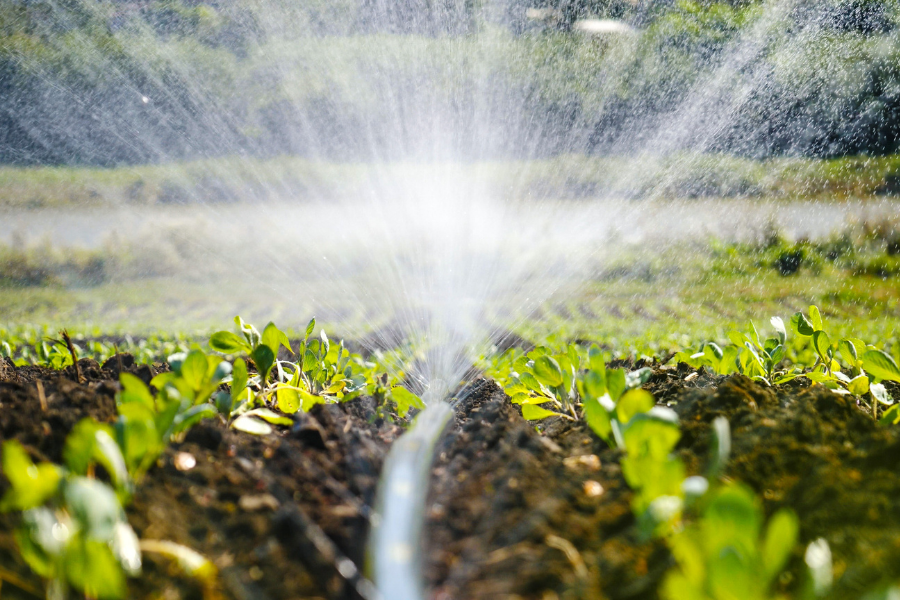Posted On: October 17, 2023
Posted By: KSNM Drip

Irrigation is one of the most important uses of water all over the world. Irrigation water helps in the cultivation of fruits, vegetables, and grains, feeding millions of people all over the world. Irrigation has been around with us since the first race of humans started cultivating their own food. Irrigation methods have evolved over time; some of the most commonly used irrigation methods are surface irrigation, sprinkler irrigation, and Drip Irrigation.
Drip irrigation is a type of micro-irrigation system, where the system allows the water to drip slowly to the roots of the plants, either from above or below the soil surface. This irrigation method is an effective way to water the root zone, and also minimize evaporation. Since it prevents wastage of water and provides water supply at required intervals, there is also an increase in crop yield.
Drip irrigation is designed with a network of valves, pipes, tubing, and emitters to carry out its essential operation. The network of values is connected to the main water supply. Once the water flows through the network of pipes, the emitters slowly drip water into the soil at the roots. This makes this method more efficient and makes it much more controllable compared to other irrigation methods.
The first step of installation includes picking up the best type of devices suited to your plant. It's always advisable to consider the type and flow rate of the watering devices based on the soil type and the plant�s water needs.
To proceed with the installation, start by laying out the main water supply line along the desired path of the plant rows. Attach a filter and pressure regulator to prevent clogs and control water pressure, then connect drip tubing or hose to the main line, laying it out in a grid pattern with emitters or tubing stakes to deliver water directly to plants' root zones. Test the system and make necessary adjustments, and finally, cover the tubing with mulch to conserve water and protect it from UV damage.
By reducing the amount of evaporation.
By distributing water more precisely to the water roots.
By selective-area watering techniques
By increasing effectiveness even on uneven ground.
Yes, drip irrigation can prevent waterlogging because it delivers water directly to the root zone of plants in controlled quantities, reducing the risk of overwatering. This method ensures that plants receive the necessary moisture without saturating the soil with water excessively, making it an effective strategy for maintaining proper soil moisture levels and preventing waterlogging.
The amount of money saved through drip irrigation will vary depending on factors like the size of the agricultural area, local water costs, and the efficiency of the system. However, on average, drip irrigation can lead to noticeable savings compared to traditional watering methods. Drip systems use water more efficiently, reducing wastage due to evaporation and over-watering.
This can result in water bill savings ranging from 30% to 60%. Additionally, because plants receive water directly at their roots, they tend to grow healthier and produce higher yields, potentially increasing profits for farmers. Over time, the cost savings and increased productivity can make drip irrigation a worthwhile investment.
Drip irrigation definitely increases crop yields when compared to traditional irrigation methods. The reason behind this is that it delivers water directly to the root zone of plants in a controlled and efficient manner. Providing the right amount of water and nutrients directly where they are needed promotes healthier plant growth. The efficient use of water and nutrients provided by these systems can lead to increased crop yields, making it the ideal choice.
Inspect and clean filters and emitters on a regular basis
Check for leaks or damage in the tubing
Adjust pressure regulators and timers as needed
Control accumulation of weeds and debris
Conduct regular system inspections
Proper maintenance ensures efficient water delivery to plants, prevents clogs and leaks, and maximizes the benefits of drip irrigation for crop health and yield.
In conclusion, drip irrigation is a highly efficient and effective method for delivering water and nutrients directly to the root zone of plants, promoting healthy growth and potentially increasing crop yields.
However, to reap the full benefits of this irrigation system, it is essential to maintain it regularly. Proper maintenance not only ensures efficient water distribution but also prolongs the system's lifespan, conserves water resources, and ultimately contributes to the success of your farming journey.